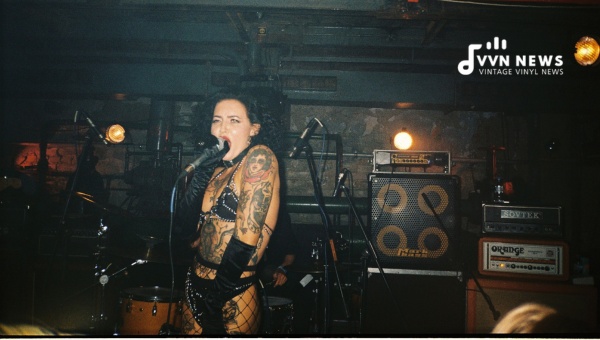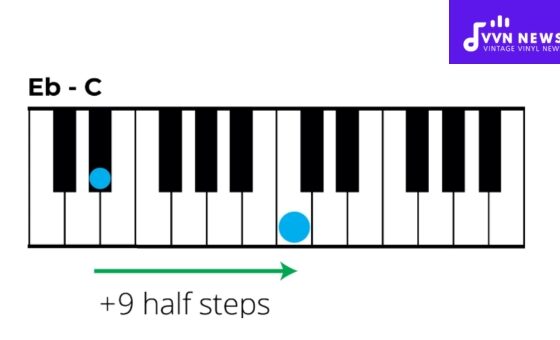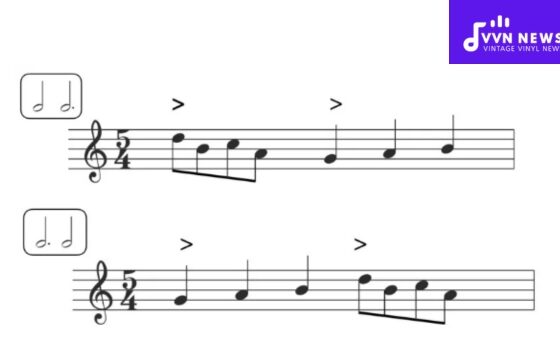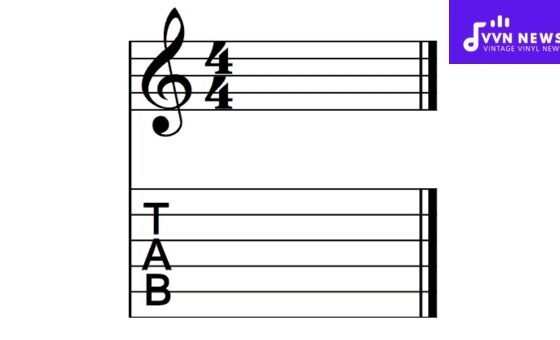Music is a universal language that transcends borders, cultures, and time.
It’s a language we all speak to express our innermost feelings; a melody can lift our spirits high on cloud nine or plummet us deep into an abyss of melancholy within just a few chords.
Within this vast world of sound and rhythm reside the multitude of musical genres that offer multiple layers of positive vibes, emotional depth, cultural narratives, and worldviews to the listeners, from gospel and blues to indie pop and heavy metal.
Yet, today, we plunge into an unconventional dialogue where 13 music genres that should disappear come under scrutiny.
Now, don’t put your boxing gloves on just yet! This isn’t meant to demean your favorite setlist nor declare an outright dismissal of these music types’ existence.
This audit hopes to stimulate conversations for musical progression’s sake, assessing whether these genres may have crossed their zenith and are perhaps ready for graceful retirement or innovative reinvention.
Maybe my findings may resonate with some who share this sentiment or upset others who passionately champion these genres’ relevance even today – let’s walk this tightrope together!
13 Music Genres That Should Disappear
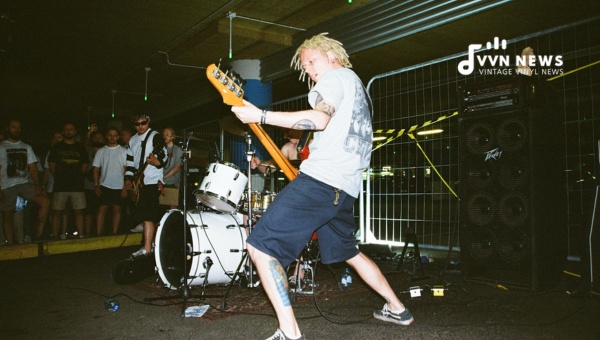
In the ever-evolving panorama of music, genres are born, rise, peak, and quite often fade away, morph into something new, or fall into obscurity.
Examining this life cycle of music genres in depth today, we’ll delve into two dynamic entities that stir emotions among the crowds.
Nintendocore
Representing an eclectic fusion of rock music with elements of video game music from the 8-bit era, Nintendocore emerged in the late 90s and early 2000s.
Bands like Horse The Band and Minibosses carved a niche corner in the music scene– blaring metalcore interspersed with chirpy Nintendo melodies lighting up childhood nostalgia.
Whether it was head-banging anonymity or a weird harmony that fascinated listeners back then is debatable; however, its limited margin for musical exploration bordered predictability, rendering Nintendocore stagnant over time.
Today, this genre runs on fumes with its novelty factor worn thin– its bursting chords dulled by monotony and its quirky ambiance lost to repetitive patterns.
Music is meant to breathe life experiences– and evolve through collective perspectives; sadly, Nintendocore fails to break free from 8-bit confines to paint vivid portraits of human consciousness.
Skweee
Skweee, peculiarly named after ‘squeeze,’ surfaced in Scandinavia during the mid-2000s, drawing elements from funk, R&B electro, and synth-pop synthesized densely on vintage machines.
Artists like Randy Barracuda and Daniel Savio painted colorful narratives against simplistic beats, offering a new palate to groove on – musically charming yet oddly limiting.
The Skweee soundscape might appeal initially with its fresh rhythm structures, but its over-reliance on old device sound synthesis and redundant beat progression can induce auditory fatigue.
Its restrictive adaptation of R&B and funk undercuts the depth these genres inherently possess, yielding a somewhat superficial feel to the musical exploration Skweee intends.
Also Read: B Flat Minor Pentatonic Scale [Create Emotive Music In Minutes]
Crunkcore
Coined from a blend of ‘crunk’ and ‘hardcore,’ Crunkcore swarmed the charts during the late 2000s.
Bands like Brokencyde and Millionaires outfitted with synthesizers, vocoders, and auto-tune devices, concocted loud anthems laced with brutal beats, echoing the themes of hedonism and angst.
Crunkcore’s hallmark is its gratuitous use of auto-tune layered thickly on simplistic lyrical content – often screaming party culture or teen rebellion wrapped in electronica-infused scream vocals.
The genre sparked controversy for its musical style and materialistic depiction of rebellious adolescence.
Critics argue that Crunkcore’s unusual fusion undermines the potential profundity of music – birthing a genre marred by excessive auto-tune usage, stereotypical themes, and lack of emotional depth, entangling itself into repetitive monotony.
Glitch Hop
Just as life’s hiccups sometimes disrupt our perfection-seeking rhythm, Glitch Hop is a symbolic mirror of this view.
Constructed on deliberate audio glitches, offbeat arrangements – and sample interruptions – it’s analogous to viewing a movie with occasional flickering frames yet managing to make the imperfections endearingly rhythmic.
Glitch Hop emerged as an underground movement during the mid-90s, leveraging digital audio workstation capabilities to transform malfunctions into melodies – Artists like edIT and Glitch Mob played pivotal roles in defining this genre.
Despite its innovative approach, there’s a caveat when imperfections transition to annoyance – for composers; it is essentially walking on eggshells, ensuring that glitch elements don’t dominate or disrupt focal melody structures excessively, thus diluting the listening experience.
Bubblegum Bass
An offspring of Bass music culture, Bubblegum Bass, or PC Music as it’s interchangeably known, is infused with saccharine sweet pop melodies constructed against heavy basslines and pumped with vocal effects.
Spearheaded by artists like SOPHIE and Hannah Diamond, this genre zoomed onto dance floors across the U.K. during the mid-2010s.
However, the challenge with Bubblegum Bass is its overemphasis on sensory dips and dives with exaggeratedly sweetened moods layered thickly over basslines.
Coupled with lofty vocal treatments, these elements often strain rather than stimulate musical pleasure.
Witch House
Witch House weaves a magical yet eerily dark blend of chopped and screwed music interlaced within ethereal synthpop undercurrents.
This relatively mysterious genre surfaced during the late 2000s– crafted by bands including Salem and Crystal Castles.
The strain in Witch House emerges from its intensive usage of dreary themes, dark undertones, and pitch manipulation.
This results in overly gloomy soundscapes that mar the individualism of melodic progression or peppy rhythm generation—moreover, the intentional obscurity in promotion practices employed by bands stymies connection to Wood’s wider audiences.
Also Read: B Minor Pentatonic Scale [Inject Your Music With Dramatic Flair]
Redneck Rap
Redneck Rap is a type of hip-hop that blends southern and country influences. Originating in rural areas of the U.S., it holds stereotypical elements of the ‘redneck’ culture – fishing, mud bogging, and hunting.
Stars like Big Smo, Colt Ford, and The Lacs took this cacophonous mix mainstream with anthems centering on farming life drama.
Despite its flashy appearance and raucous beats, it often relies too heavily on a repetitive riff framework showcasing fewer lyrical depths.
This genre is seen as more gimmick-driven than musically fulfilling for many listeners.
Considering the spiritual sensibility of country music paired with the socio-political discourse of hip hop – Redneck Rap has much potential it unfortunately seldom reaches.
Chap Hop
Move over Hip Hop; here comes Chap Hop, earmarked with British eccentricity!
Championed by artists like Mr. B The Gentleman Rhymer and Professor Elemental, Chap Hop delivers rap verses in a Received Pronunciation accent over an Edwardian-inspired beat– evoking images of monocles, cricket fields, tweed suits– an intriguing Edwardian era hip-hop mix indeed!
Its quirky infusion offers a jolly good laugh or two but does little to explore beyond satirical grandeur.
Therefore, chap hop has remained a novelty rather than establishing a severe foothold in the music sphere.
Black MIDI
Black MIDI came blazing from the East with glorious mayhem! It refers to music compositions where MIDI files are filled with notes, creating an overwhelming visual effect akin to looking at a musical ‘black hole,’ hence its name.
Internet Phenomena like Gingeas and The SuperMarioBros2 helmed this genre, starting in Japan and spreading worldwide.
While impressively chaotic visually – sonically, it merely creates dense walls of noise offering little discernible melody or rhythm – making it less appealing to general audiences.
The genre often borders on a test of computer processing power rather than a melodic pursuit, thereby experiencing limited reception beyond niche boundaries.
Pirate Metal
Pirate Metal mashes heavy metal themes with pirate lore, resulting in Jolly Roger wielding anthems by bands like Alestorm and Running Wild.
It incorporates nautical elements through lyrics and instrument arrangements, wrapping it up with growling vocals.
While it indeed swashbucklers its way into listeners’ hearts with its upbeat tempos and raucous themes, the genre’s limited subject matter has arguably contributed to its restrained evolution.
Its overemphasis on pirate imagery often leads to musical stagnancy with little novelty in subsequent tracks.
Pirate metal risks becoming a genre anchored by its thematic confinements instead of exploring the vast flowing sea that metal inherently is.
Also Read: C Sharp Major Pentatonic Scale [Crisp & Clear Tones For Your Music]
Unblack Metal
Unblack metal, a subgenre of heavy metal, often perplexes those who first come across it.
Born out of the darker side of music, it occupies an interesting paradox where searing guitar riffs married to heavy drumbeats act as a platform for Christian themes and beliefs.
Names like Horde and Antestor pioneered this one-of-a-kind genre in the ’90s, known as Christian Black Metal.
While it musically mimics its father genre – black metal with its aggressive instrumentation and harsh vocals – lyrically, it stands in stark contrast.
Unlike the anti-religious themes prevalent in traditional black metal, unblack metal promotes Christian beliefs.
However, this genre has stirred up controversies—a clash of two contrasting ideologies sandwiching music.
Its constrained core subjects – exalting holiness while demonizing sin – limited broader thematic possibilities.
This duality could invoke curiosity among new listeners but become monotonous over time due to its singular narrative focus.
Horrorcore
Down the road to another unique musical alley lies Horrorcore, a niche that emerged from the depths of hip-hop culture.
It presented raw narratives saturated with horror-themed lyrics and cinematic gruesome imagery.
The name-tags like Insane Clown Posse and Brotha Lynch Hung ruled this domain during the ’90s – their verses filled with stark violence eating into listeners’ comfort zones.
Despite its provocative audaciousness in painting vivid pictures of societal horrors, sometimes interpreted as fantasies or metaphorical context for societal ills, Horrorcore tends to remain tightly bound by its horror-gore-stricken storytelling.
This was its most significant selling point, but it also leashed it down from exploring broader musical terrain outside gruesome storytelling.
Mass embrace of such a genre has been challenging due to explicit violence; it often stays under watchful eyes, throwing question marks on its sustainability or desire for wider acceptance within mainstream music pallets.
Splittercore
The Splittercore genre introduces us to a world where rhythm is hyper-sped to its maximum – inducing abrasive aural experiences.
Originating from Europe during the late 90s, this style belongs to a subset of hardcore techno called ‘speedcore.’
The genre is characterized by highly high tempos, usually over 600 beats per minute (BPM), and can reach extreme levels of 1000 BPM or more.
Yet, ironically, it fails to serve the rhythmic purpose of music, turning sound into blaring noise that may not resonate feed unless one seeks an aggressively challenging listening experience.
This factor severely restricts its acceptance among broader audiences.
So when we question aspects of these genres’ survival or commitment in evolving forward – remember it’s merely an alarm for constructive changes centered around artistic growth and wider resonance among listeners.
Also Read: D Major: The Scales And Chords [Broaden Your Musical Vocabulary]
FAQs About Music Genres
What is Nintendocore?
Nintendocore is a fusion of video game music from the 8-bit era with rock nuances, emerging in the late 90s and early 2000s.
Why does Nintendocore fall off the radar?
Nintendocore struggles to evolve or portray diverse life experiences, as its scope is limited by its 8-bit confines and predictable musical patterns.
What characterizes the Skweee music genre?
Skweee, originating in Scandinavia around the mid-2000s, combines elements from R&B, electro, and synth-pop synthesized on vintage hardware equipment.
Why isn’t Skweee more popular?
Despite its unique soundscape, Skweee’s over-reliance on sounds synthesized on old devices and its superficial adaption of R&B and funk elements make it musically limiting and lack depth.
Can these genres revive or morph into new entities?
Yes! Music genres can adapt to time and blend influences from changing cultures and technologies to innovate new soundscapes – a chance these genres might yet grasp for survival or resurrection.
Conclusion
Every genre has its unique aura, purpose, and fanbase. Nevertheless, Nintendocore and Skweee, as discussed above, seem to have found themselves in an evolutionary deadlock.
This doesn’t imply the complete obliteration of these genres – instead, an invitation for the artists to reinterpret, reinvent, or retire them for newer musical territories.
Creativity thrives when it refuses to be boxed within binds but sets itself loose to soar beyond conventions.
As listeners, too, let’s widen our soundscape and journey through the ever-evolving cosmos of music while encouraging creative exploration.
